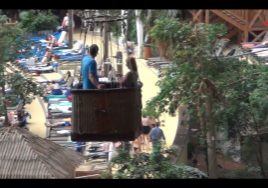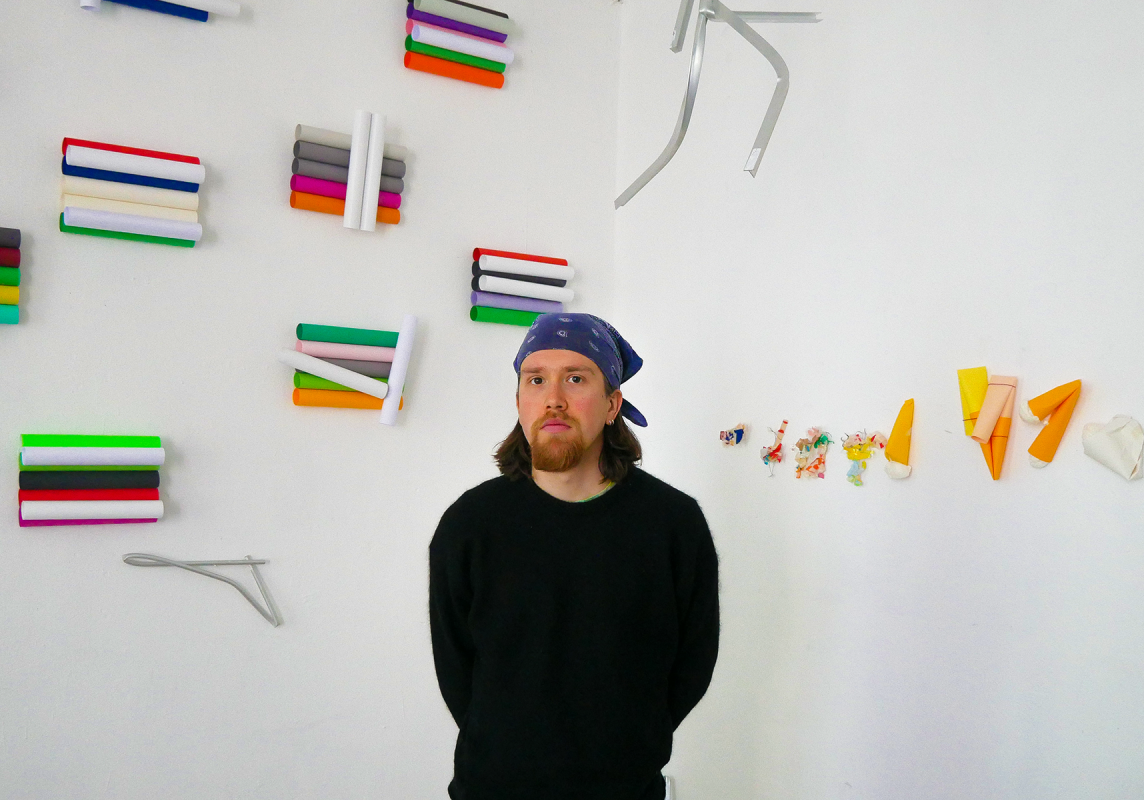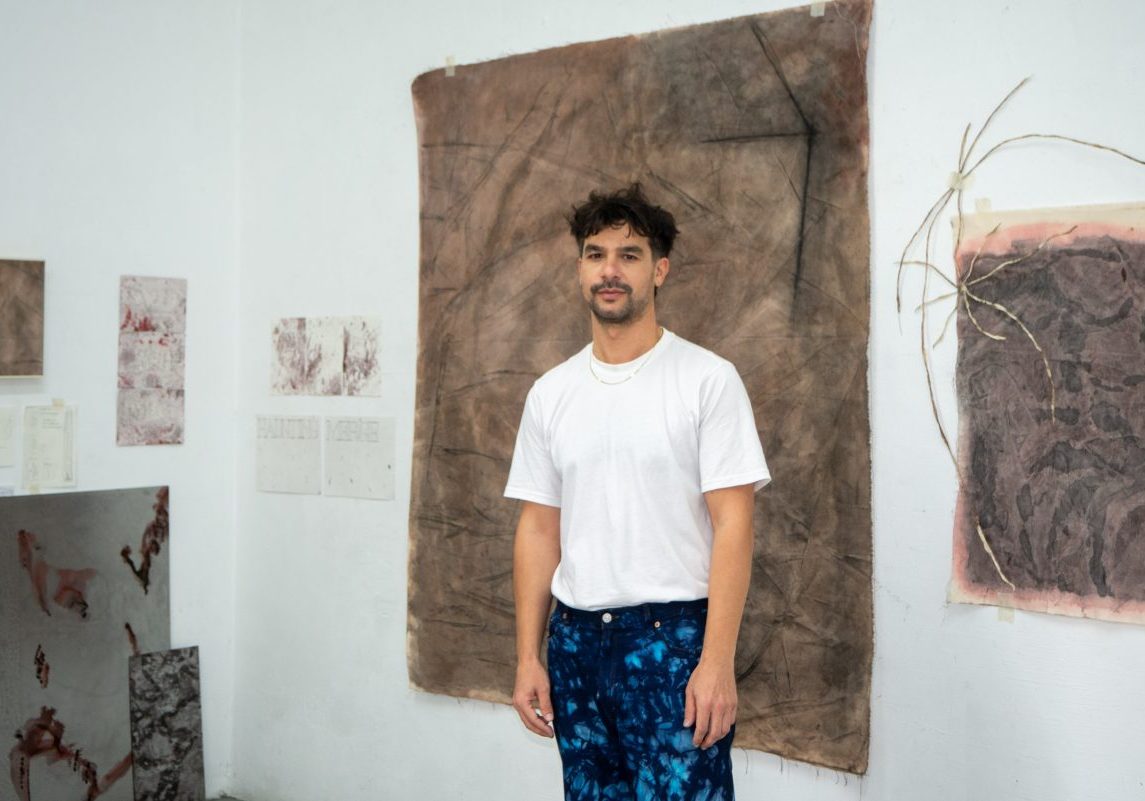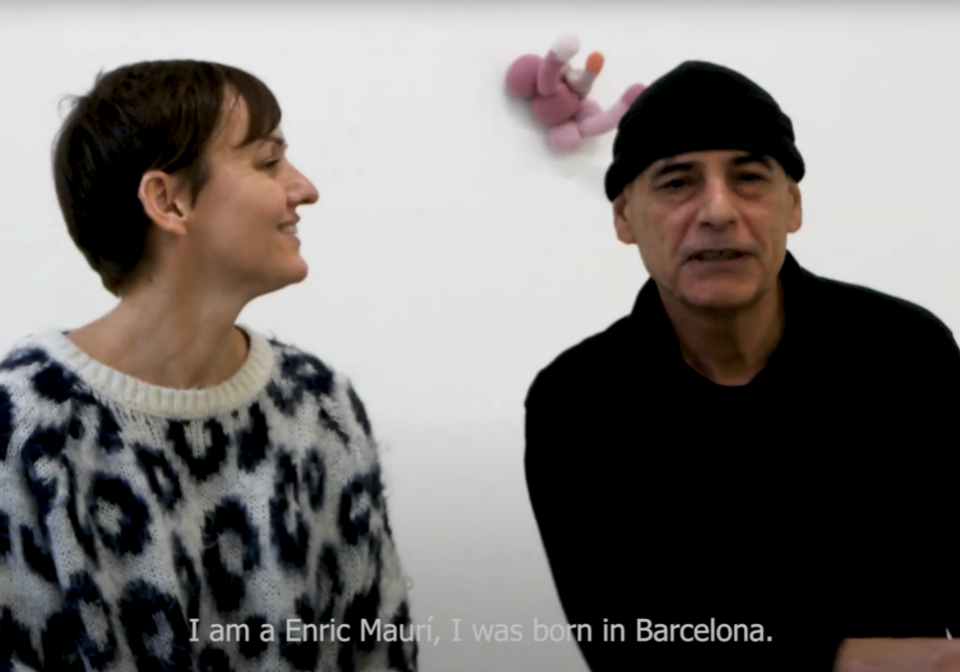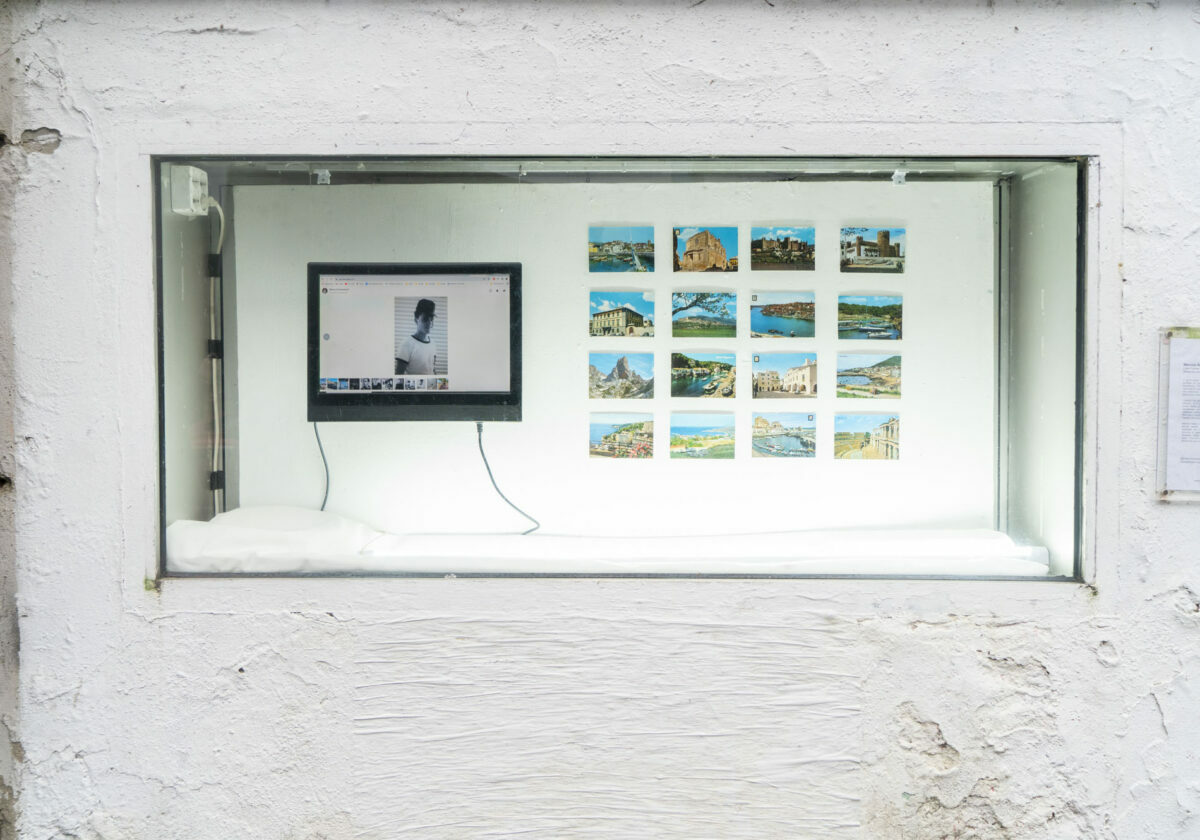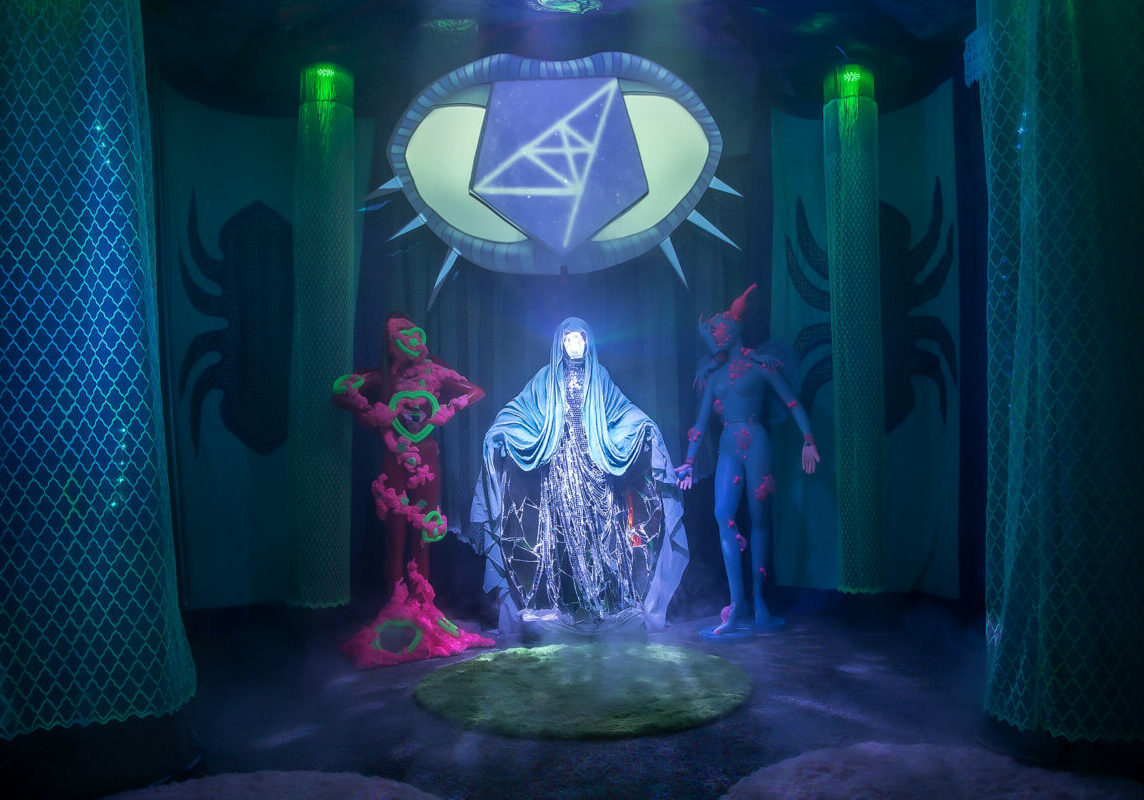Meet the Artist // Brittany Brush
The new Meet the Artist interview is out and this time we are glad to present Brittany Brush. Brittany’s work is a bridge linking external time and space to internal thoughts and feelings. “Each work created draws from my curiosity to understand something deeper about society’s epistemology, ultimately fueling an innate desire to transform those feelings into sublime experiences.”
You have a background in Psychology, and that is quite noticeable in your work. You focus mainly on ephemeral subjects such as memory, thoughts, feelings, and sensations which you make tangible through audio-visual language. In the June Open Studios catalog you quoted André Breton, the author of the Surrealist manifesto. In which way do you consider your work to be inspired by this movement?
Before I began as an artist, I had studied both Biology and Psychology extensively for several years. So quite naturally, these subjects began to materialize within my work, and have since become increasingly influential in how I translate ideas and establish connections.
Specifically because of my academic background in Psychology, I was initially inspired by the writings of Breton, along with the works of Man Ray, and Roberto Matta—all of which fascinated my interests, bridging my transition from psychology into art. In a broader sense now, I believe there has been a suppression of internalized emotion and intuition amid the rise of rationalism—and there are many significant parallels within today’s contemporary society and that of the original surrealists. I construct and juxtapose internal and external realities, and focus on making psychosomatic connections between the body and mind. So for me, I think it is important to make work with a historical context in mind—so there is some influence of Surrealism in how I am making work in a contemporary sense within a society that is so technologically driven and often times emotionally detached.
I also see a relationship to ideas of Surrealism both with respect to the content of my work, and also how I approach my process—especially in my impulse to bridge subconscious connections that relate to memory, the dream-like, internal thoughts, and sensations. Additionally, I place a focus on spontaneity and emphasizing the abstract in order to free the imagination. Given the connections within my work to the ephemeral, this approach provides flexibility in order to probe deeper connections and relationships to both psychology and the psychoanalytical. One of the other reoccurring parallels is the linking of audio and visual abstractions to generate subconscious associations, which I see as a way of accentuating a more irrational way of thinking. So this emphasis on the irrational is a space that I am working in as I am interested in how the exposure to the irrational shapes our perception of reality. These ideas of the subconscious and the irrational also had an impact on my transition into sound and video. I find sound and video to be very fluid mediums, especially when working with ephemeral subject matter . When considering some of my initial inspirations, Emak Bakia & L’Étoile de Mer by Man Ray, I realized the necessity of having the freedom to adjust and manipulate variables real-time in way that allows me to intuitively respond to the ideas and what they need at certain moments.
You have stated that your art is “a bridge linking external time and space to internal thoughts and feelings”. How do you choose the imagery to embody these immaterial subjects? And how do you think that the potential of the audio – visual language can help in creating collective imagery?
With respect to the statement about this bridge within my work—I often loosely define my overall artistic practice as a means of fusing internal and external realities. I frequently look towards the external: physical environments, landscapes, and experiences—and merge them with the internal: thoughts, feelings, and emotions.
I am constantly scanning my archival backlog of audio and video recordings — intuitively looking for things within this merge of the internal and external that are ephemeral, and often quite invisible if approached from a logical point of view. There is no a clear formula for associating specific imagery to a certain idea, but there are certain patterns of auditory, visual, & emotive stimuli I look for both when collecting footage and in the editing process that reveal subtle truths within these transitory moments in time.
These emotional and auditory modes of communication are quite remarkable in their universality to transcend language barriers. Because of this, I am continually looking for ways to communicate emotively. As much as intuition places a critical role in my imagery, I am looking to create complex systems that provide access for viewers to connect with these non-verbal languages, allowing for the ability to experience other states of consciousness that perhaps the viewer would not experience otherwise.
According to your artistic statement, your goal is to “understand society’s epistemology, ultimately fueling an innate desire to transform those feelings into sublime experiences“. How much of your work is autobiographical? And to what extent do you believe that people can relate to your experiences?
As people, our brains have the capacity to store vast quantities of highly complex information, even unknowingly so. And throughout our lives, this information is cyclical, repeating itself with experience, overtime becoming embedded within us. Often this information isn’t readily understood within ourselves—at least, not until the conscious mind becomes aware of it’s existence, and begins to grapple with the meaning.
Within each work I create, I am looking to collective memory as a means to break down these complex pieces of stored information. In my work, I focus on putting these collective experiences on display to be universally experienced and individually understood. Self- transcendence and empathy are two ideas that are always pressing in the back on my mind during the creation of my work. When considering your own epistemology, inherently the focus transitions to something beyond yourself. There is this strain of commonality in our existence as people that is stronger than the distinctions we see externally. So in my work, I am continually in a state of thinking more about the viewer than about myself, specifically to consider the viewer’s ongoing search for a deeper version of their internal selves and how I can create an environment for that to occur.
How does your artistic process usually work?
My process begins as a natural response to my external environment—it is why I travel and expose myself to new realities so frequently. I am constantly perceiving the everyday— filming, recording, and seeking moments of daily life that are unique, inspire me, or make me feel something internally. I believe art should awaken something inside you, so I start my process seeking something that awakens me—whether that is a finding a connection with what I am filming, a moment while editing that resonates with me, or using physical materials to activate my thought process.
My process is also built around maintaining an equilibrium—staying in the studio vs. going out in the world, editing on the laptop vs. losing myself in a sketchbook, defining structure vs. releasing control. When I set out with a particular project in mind, I always make a rough storyboard, yet allow room for chance and spontaneity to influence the course and/or outcome. So I never necessarily start with one particular step, but instead allow intuition to guide my decision making. I organize complex systems of associations and connections; yet I rely on intuition to determine how I operate within that framework. Since my work takes into consideration an emphasis on bridging subconscious connections, I work in a continual state of push and pull against my logical self, in order to fully create tangible moments that are more experiential than rational. Allowing for my process to be intuitive and ‘in tune’, almost like a form of meditation with my own presence, allows me to discover deeper connections with my own subconscious and create works that are genuinely authentic.
Several philosophers, such as Friedrich Nietzsche, tackle the question of the eternal return – the concept that the universe and all existence and energy has been recurring, and will continue to recur, in a self-similar form. The loop is a recurrent effect in your work. In your artistic language, is it an allegory of the eternal repetition of life and death?
I think the reference you make is valid, but what I would say is that I don’t see the loop as only one translation in my work. We all exist within complex systems that demonstrate patterns of repetition over time, and the cyclical nature of life and death is one of those translations that does exist within my work. At the same time, I see the idea of the reoccurring as more of a lens into empathy and a means of amplifying awareness of the underlying reality. I am looking to put emotion out in the world: to reveal it, project it, show it, reflect on it, and have others experience it. In this sense, the repetitive nature of my work is an allegory of bringing to the surface deeper emotions that give more meaning and context to our existence—meaning that often times remains dormant within us. We are often deterred by the very nature of daily life to acknowledge our emotions, and even less allow them to influence how we interact with one another. The average smart phone user touches their phone more than 2600 times per day—just consider that number. Beyond that, think of the amount of time everyday we distract ourselves from our own uninterrupted thoughts just to simply acknowledge how we feel.
The loop also creates an access point into the idea of collective memory that can be relived, activating different layers of internal emotions at different times. It is this iterative nature of emotion that feeds my work into irrationality as well—the flow of absence and presence of internal emotional awareness. I detest the idea that in order to exist in the world, there is a need to logically and rationally understand it in order to exist. So to me, the idea of the loop allows for chance to reiterate this idea of irrational experience through repetition.
In your work PARACUSIA, 2015 (a state of auditory hallucination) and PARAMNESIA 1, 2016, (a distortion of memory in which fact and fantasy are confused) you are exploring the subject of mental disorder. How do you consider that those conceptions of reality which are considered out of the norm, could help expand our understanding of what reality really is?
I am fascinated by the depths in variation of the human psyche. We as a society are so quick to label what we do not know as unstable or as a disorder, simply because we lack the capacity to understand it fully. Coming from a family that has documented cases of anxiety, epilepsy, autism, and dementia, this background has driven me to consider what we perceive as reality even if we are not the ones directly experiencing its phenomena.
My artistic language is often looking to the irrational as a way for you to understand the underlying emotion and as a means of translating the underlying truth. Emotions themselves are inherently irrational—they often do not make logical sense, yet they reveal something fundamentally true. What we perceive as reality or what is disseminated to society as reality, is a reality that many times has been constructed, void of authenticity and truth. From the news that we consume, to the “reality” of reality television, the “reality” of what we portray of ourselves through social media, all of these realities supposedly are real, but in many cases are merely fabrications and manipulations. Emotions are raw and primal—they conceal an imperceptible truth that is overlooked or even disregarded in the rational world. Through the exploration of psychological disorders and exploring induced states of hyperreality, I’m looking to blur the lines of what we consider reality and what we consider nonsensical. Is reality based in what we are told is rational, logical, and what makes sense? Or can true reality be found more in the illogical and irrational? And are those states of mind undervalued in a world of data, analytics, and technology? I hope my works challenge these conventional pre-conceived notions that reality may be in actually closer to what we don’t understand, rather than what we do.
You have worked as a resident artist at GlogauAIR for 5 months. How do you feel that living and working in Berlin has influenced your work?
When traveling, my interest is genuinely in the desire to understand the people, culture, and environment in which I am residing. Berlin possesses a unique feel as compared to many European cities as it is vibrantly filled with contemporary art and multiculturalism. I continue to make day trips to various areas of the city and my curiosity is driven by the unknown.
Because I do not yet speak or read the language here, I have gone about my time within the city being ‘hyperaware’ of my surroundings and environment. Whenever I go somewhere in Berlin for the first time, I have a natural anxiety about this ‘unknown place’, because I have never been there and I don’t know what I’m going to experience. Due to this, I go about my days here with a heightened state of awareness, in continual anticipation of what I am going to experience. My travels lead me out my door for one reason, but I typically come back with something entirely unexpected. So being in Berlin has actually been a very positive experience for me and my work, allowing me the ability to be more in tune with my surroundings and the visual and auditory nuances of new spaces


